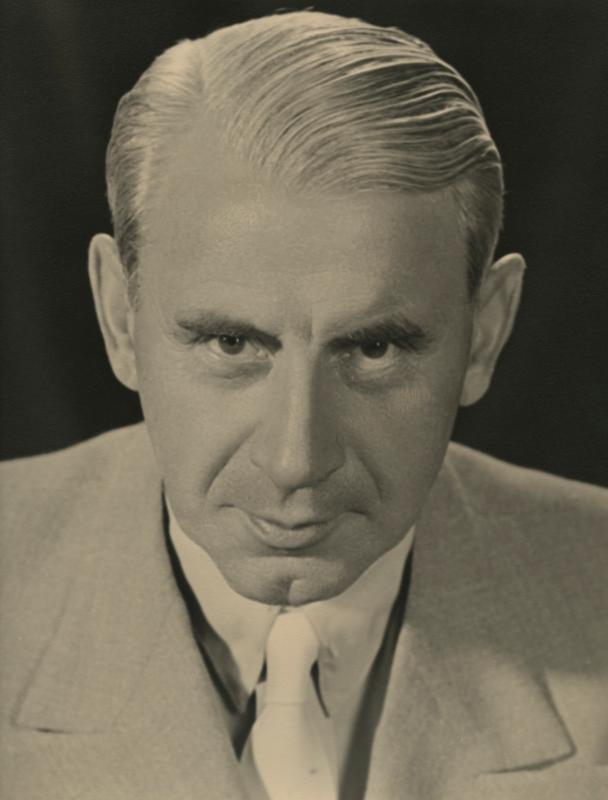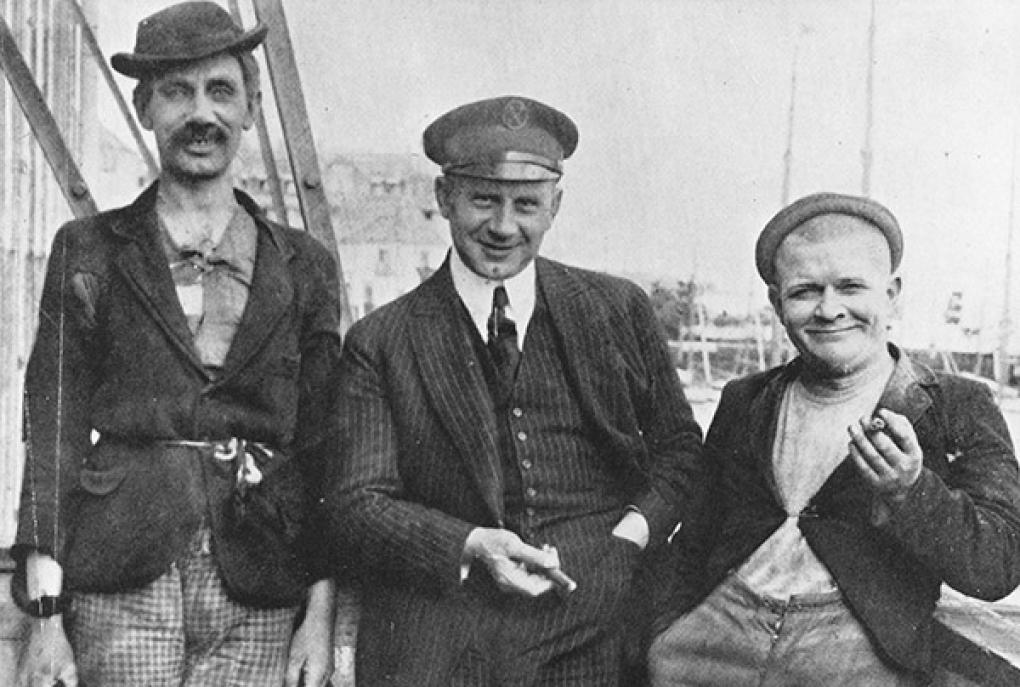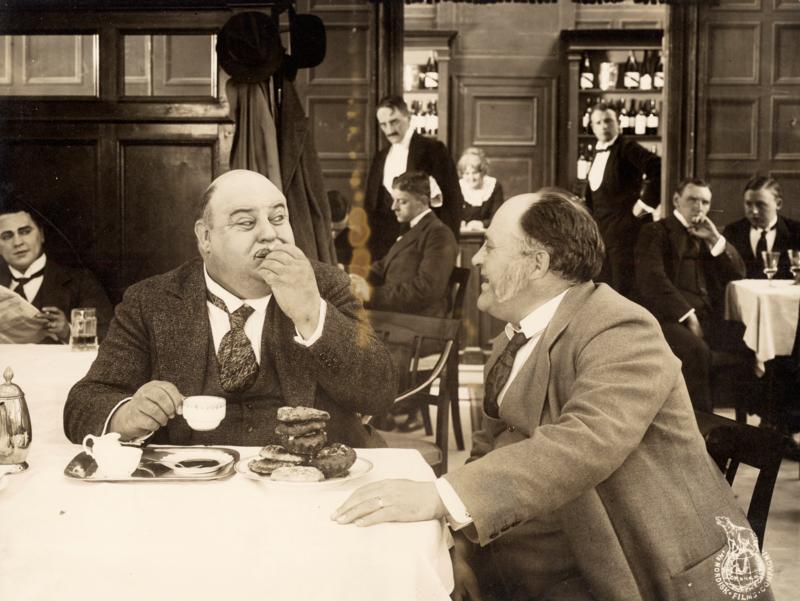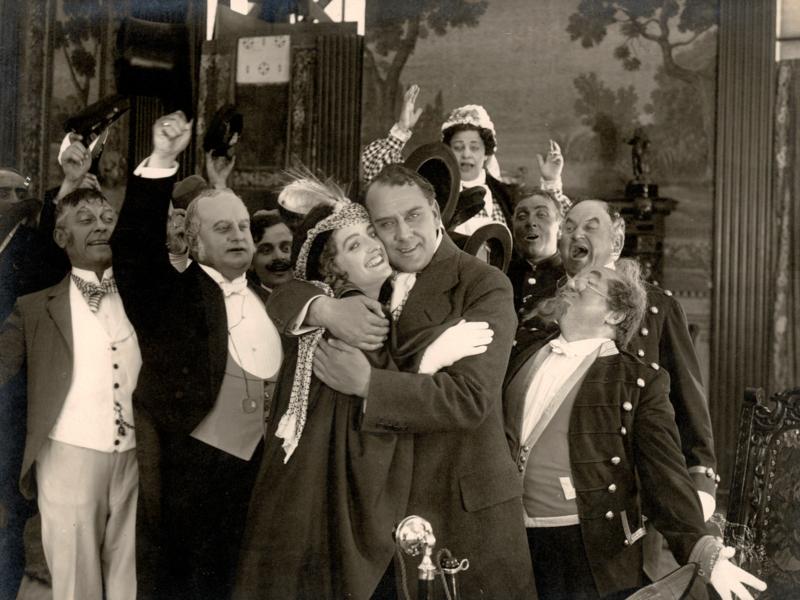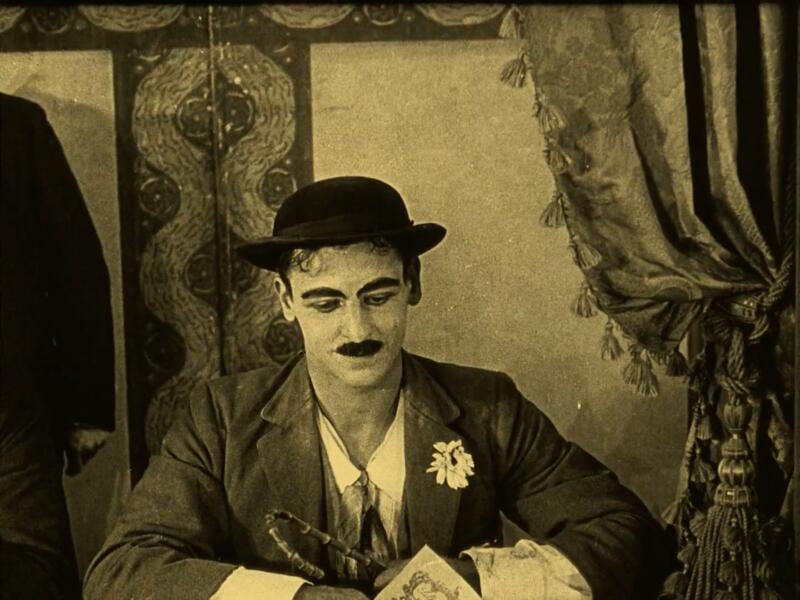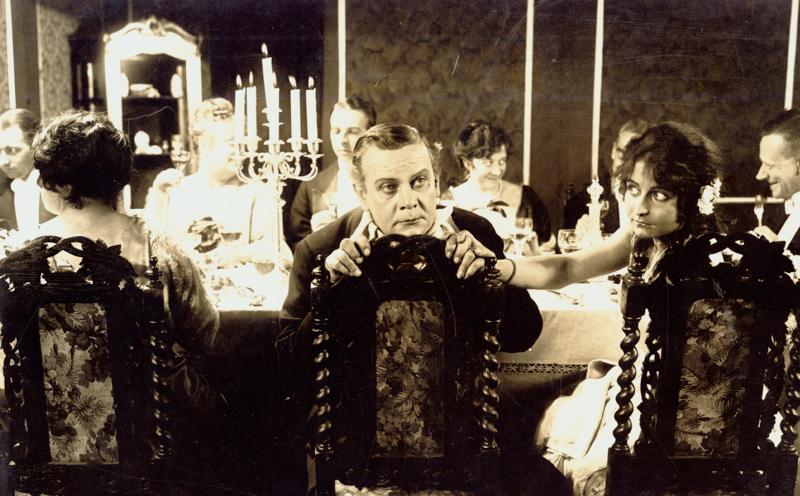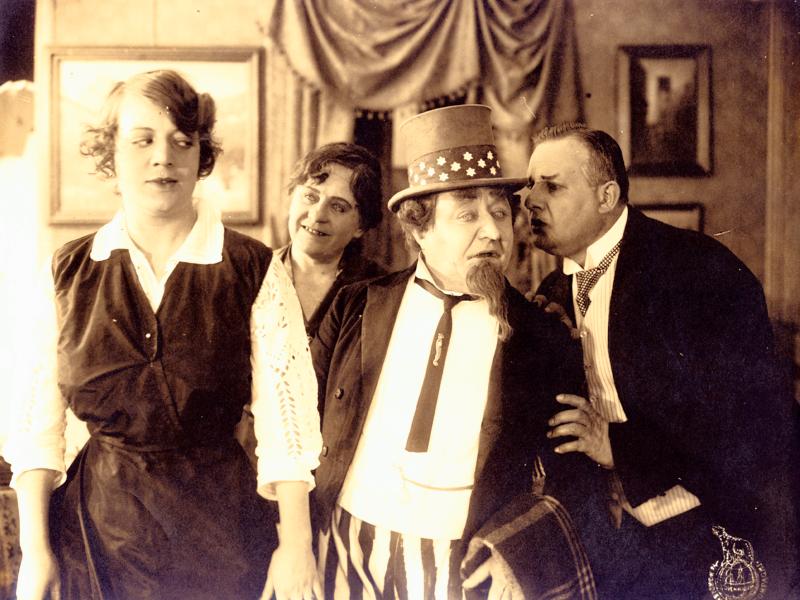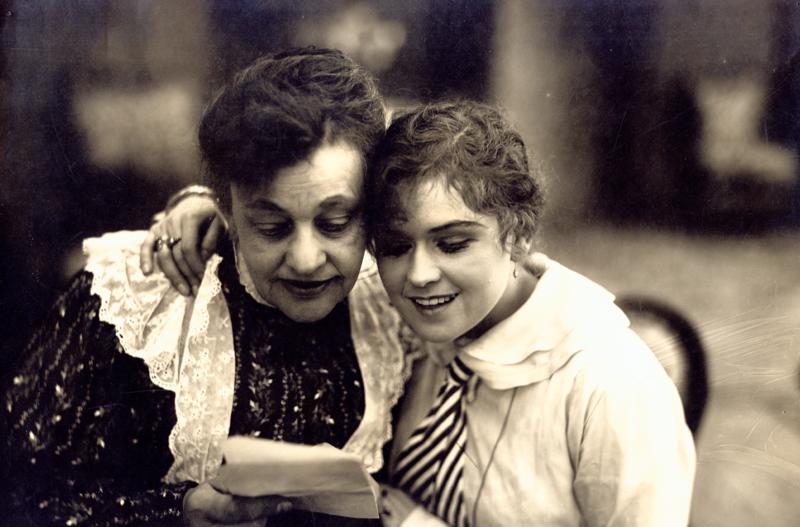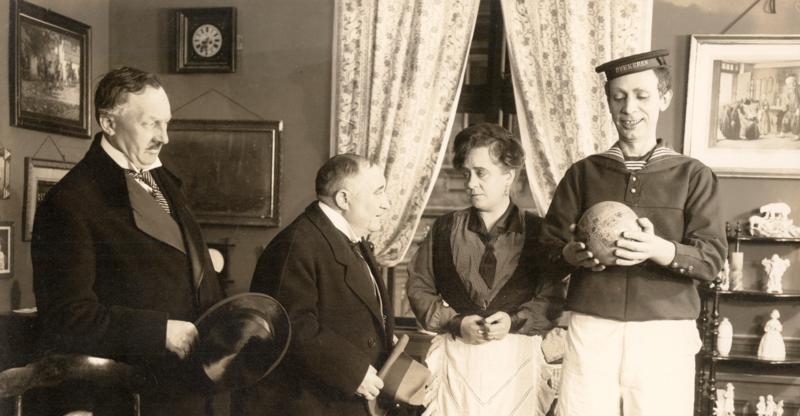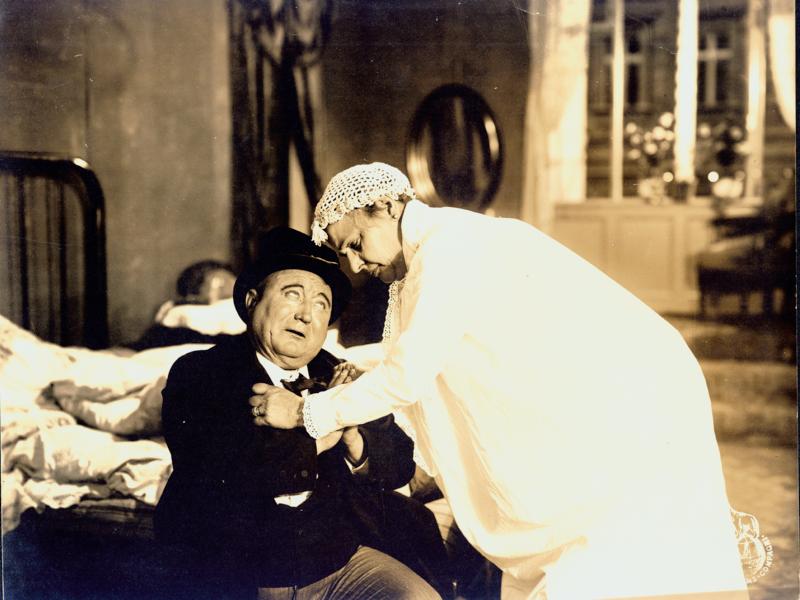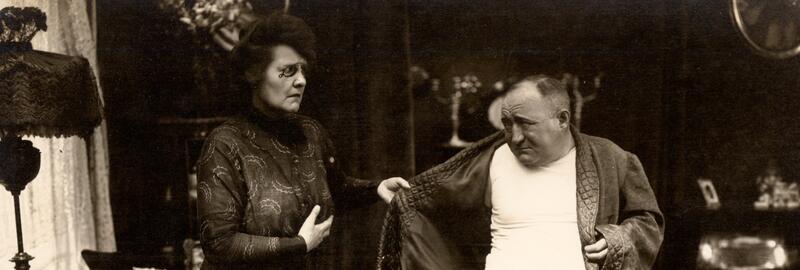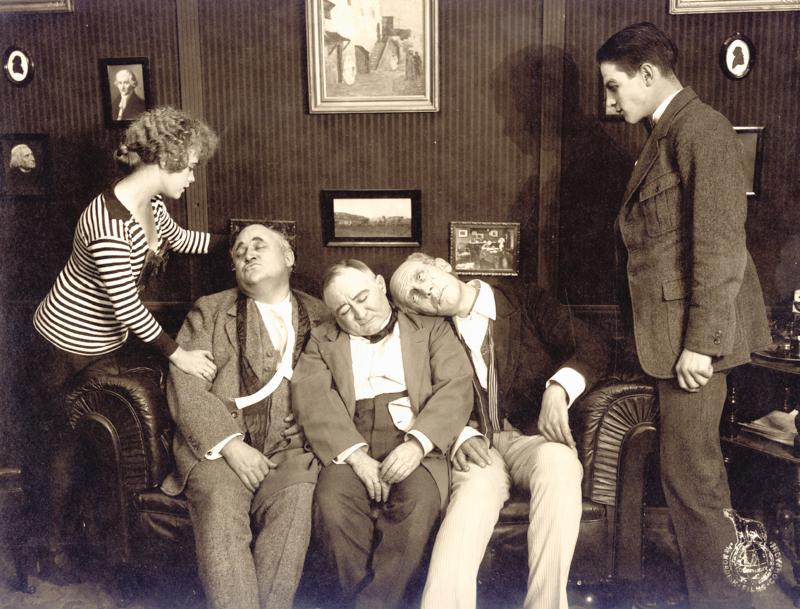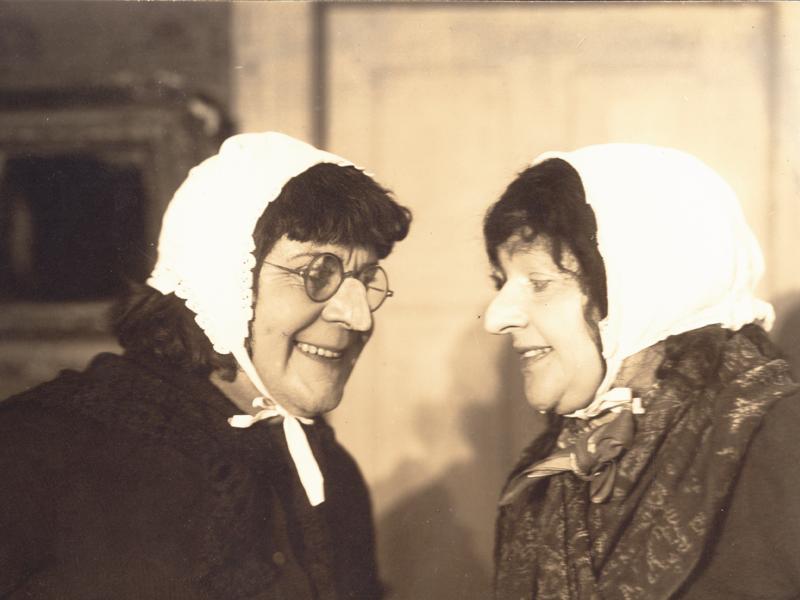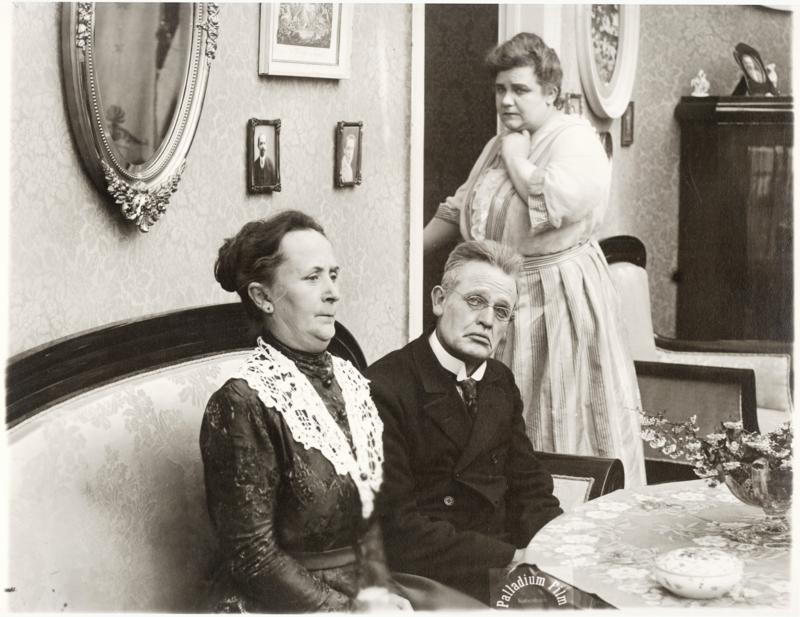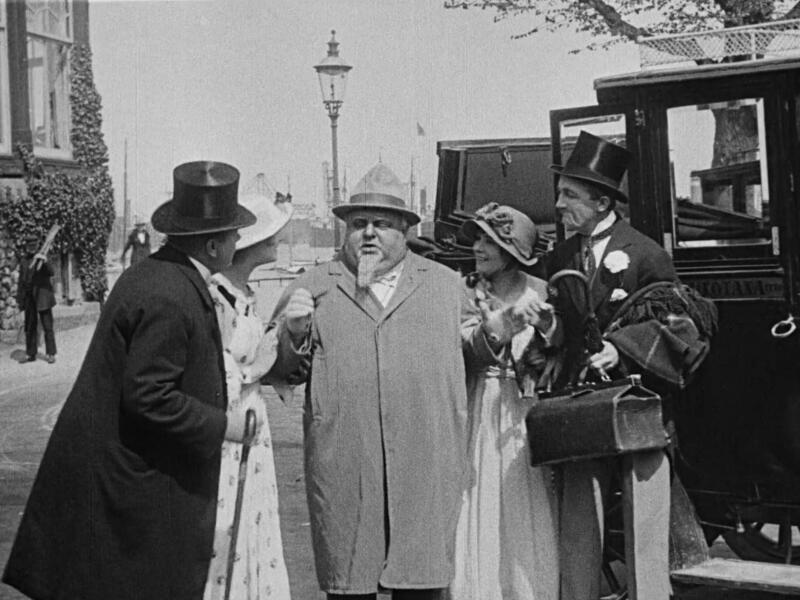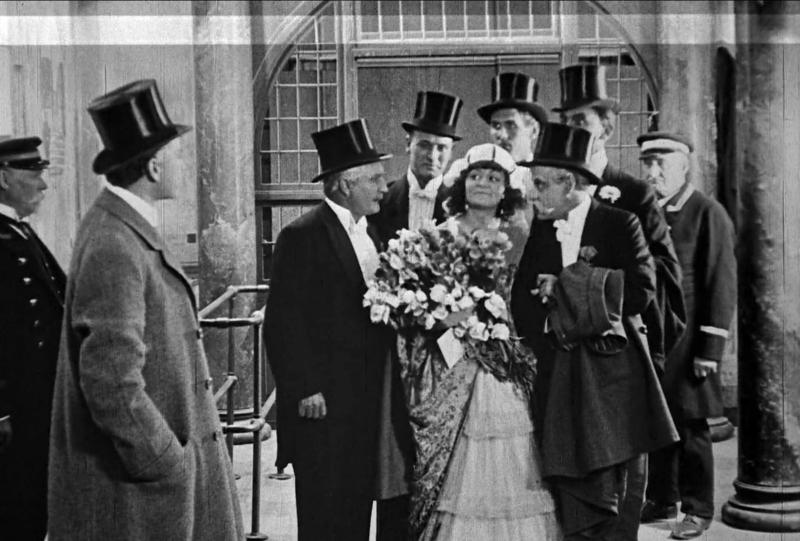If every Danish silent film stood in a line, his films would make up a tenth of them. With 252 films, he is the most prolific director in Danish film history, although he is remembered almost exclusively as the genius behind the comedic duo, Pat and Patachon. It is time to push Lau Lauritzen Senior and his short comedies into the spotlight.
Rasmus J. Simonsen, Editor | 24 October 2023
There is something inherently comical in repetition. If the merchant Martin Lauritzen had this in mind when he named his son Lauritz Lauritzen, is hard to say. Yet we can ponder whether Lau Lauritzen’s inherent repetition unconsciously led him towards a life in the world of film humour. In the director’s chair, humorous repetition becomes his preferred method of reprimanding oafish film technicians – sharp sarcasm is preferred to raising his voice. Lau Lauritzen’s scolding may even have caused a smile.
Privately, Lau Lauritzen seemingly embraces repetition; he chooses to name his son Lau Lauritzen Jr., and uses repeating alliterations in many Pat and Patachon-titles: Film, Flirt and Film Stars, Sun, Summer and Students, Clever Cannibals, and many, many more, which need not repeating here.
From commander to comedian
For Lau Lauritzen, the path towards comedy starts where things are utmost serious: the military. Although he makes lieutenant in 1901, he interrupts his career in 1905 in favour of life as a theatre actor. In 1907, he makes his debut at Aarhus Teater, followed by roles at Casino and Det Ny Teater. In the theatre scene of the capital, Lau Lauritzen’s genuine rural dialect is a rare quality and makes him popular among general audiences. Later on, verbal acclaim proves too small for Lau Lauritzen, whose eager hands itch to engage in textual tribulations.
In 1911, Lauritzen enters the world of film as a screenwriter, causing his acting to take a back seat. His directorial debut soon follows his employment at Nordisk Films Kompagni in 1914. Despite the social realist-sounding title, Lau Lauritzen’s debut film, A Welcome Lodger, is a witty mix-up comedy. In the film, the superintendent of a homeless shelter mistakes a regular tramp of being an undercover critical journalist investigating the shelter. The superficial superintendent suddenly treats the unsuspecting tramp like royalty, and the tramp plays the superintendent like a fiddle. Thus, the foundation has been laid for a career filled with comedies about power dynamics and sympathy for the underdog.
Founder and director of Nordisk Films Kompagni, Ole Olsen – a companion in repetition – must have seen potential in the young director, as Lau Lauritzen immediately gets the opportunity to make many more comedies. A whole lot more. Whether Ole Olsen truly appreciated Lau Lauritzen’s comedies for their humour or for their profitable popularity is uncertain – but it is certain that Olsen laughed all the way to the bank.
During his time as a director at Nordisk from 1914-1919, Lau Lauritzen staged a staggering 203 films. In 1916 alone, he churned out a new comedy almost every week. Despite – or perhaps because of – the breakneck pace of production and a high degree of improvisation, his works shine with passionate comedic enthusiasm. It is almost palpable that the comedies were also fun to produce.
Familiar familial farces
The popular film farces from the 1900s and the early 1910s established a plethora of recognisable stereotypes and caricatures in silly situations. Lau Lauritzen shows an aptitude for conveying and evolving a many of these comedic tropes.
For the most part, family members cannot be avoided, which make family conflicts inevitable. Dozens of Lau Lauritzen’s films revolve around family feuds between wicked wives, henpecked husbands, and menacing mothers-in-law. The only salvation for the poor men is to escape from home and go drinking with the boys – a pattern we see in Moving Day, A Lively Night, and The Henpecked Husband's Birthday. Their nightly homecomings always lead to trouble, usually involving the police. The weak men and strong women in these comedies almost seem like modern day storytelling. Yet it was well-known and commonplace humour over a hundred years ago.
Stingy family members have likely existed just as long as the concept of money. In Naughty Boy, a wealthy uncle disowns his poor nephew after he proposes to a low-class ballerina. The miserly uncle is taught a well-deserved lesson when he is tricked into adopting his nephew’s brother-in-law, who convincingly pretends to be an unruly ten-year-old boy. In Oh! Uncle!, audience sympathies instead lie with a wealthy uncle, whose two-faced nephew and niece only smile and nod with the expectation of expensive gifts from America. When petty and greedy family members are exposed through humour, Lau Lauritzen’s comedies reveal a keen sympathetic sense of justice behind a facade of fun and mischief.
The hand of justice also smites creepy charlatans chasing innocent girls. In The Chicken Chaser, a shameless womaniser is on the prowl but catches neither prey nor hints, until a beautiful young girl invites him for a date at the confectionary. Suspiciously, the cunning girl is nowhere to be found, instead a handful of other gullible men are. Harsher punishment is reserved for the slimy baron Dandy in Miss Theodor who serially stalks young girls from the housekeeping school. One of the girls’ big brother disguises himself as “Miss Theodor” and seductively lures the baron home to beat him up. The old pig and his animalistic appetite have received their just deserts.
Lau Lauritzen’s comedic crew
Actors are to a director what brushes are to a painter. Early in his career, Lau Lauritzen allies himself with a load of leading farce and cabaret actors. The five actors highlighted below are selected based on the number of Lau comedies they appear in and because they represent certain character archetypes.
Frederik Buch
Oscar Stribolt
Lauritz Olsen
Betzy Kofoed
Agnes Andersen
Battle of the sexes
Judging solely by the numbers, Lau Lauritzen appears more loyal to his male actors, where a section of the most frequently used ones, such as Frederik Buch, Oscar Stribolt, and Lauritz Olsen, all appear in twice as many films as their most frequently used female colleagues. Of course, when men always have leading roles and women can only hope for a supporting lead, the numbers reflect this. While quite a few female actors are employed over the years, none of them ever become mainstay.
The female archetypes in the films are clearly influenced by their time. Older women are consistently cast as old wives – at best, they are dull, and at worst, they are downright wicked or even dangerous. On the other hand, the younger female roles are often an exciting distraction. The young women are beautiful and seductive, and the gullible men in the comedies make fools of themselves in attempts to gain their favour. Lau Lauritzen himself was married and divorced twice. Perhaps there is some connection?
The king of comedy
Despite many of the silent comedies having simplistic slapstick or exaggerated gender stereotypes as their focal points, there are often distinct elements that set Lau Lauritzen’s films apart from the base farces of his time.
Lau Lauritzen has no trouble skewering the one-dimensional stereotypes that the everyday comedies often rely on. In Nelly's Knights, three cohabiting bachelors openly proclaim themselves misogynistic. Yet when the young girl Nelly needs help, the so-called woman-haters rise to the occasion as helpful heroes. The film is not even done subverting audience expectations; Nelly has run away from home because her father, the notorious heavyweight-boxer Bømann (reminiscent of bogeyman in Danish), disapproves of her engagement to her boyfriend Tobby. A furious Bømann discovers the bachelor pad, and it becomes a matter of how many punches the three young men can endure before Tobby arrives with a priest to marry him and Nelly. The plan succeeds, but the hot-tempered Bømann reacts surprisingly wholesome. Instead of being angry, he is immensely proud of his daughter’s rebellion against authority and grants the couple his blessing. An unexpected heart-warming ending to the seemingly slapstick conflict.
Sometimes, Lau’s comedies break all known boundaries of time, space, and decency. In Football Calamities, the football-loving rentier Back’s childlike enthusiasm and behaviour constantly infuriates his wife. When Mrs. Back discovers that Mr. Back has signed up for an old boys’ football match, she grounds the old man like an unruly child. However, film’s childish antics come to a macabre end as Mr. Back sees only one way out: to fake his own bloody suicide. He smears his neck with dark red condiment, takes his razor in hand, and screams his death rattle. The “deceased” is taken by an ambulance, and wearing a white sheet, he escapes, runs to the old boys’ game, and scores the winning goal. Afterwards, the deceased returns home and “haunts” his grief-stricken wife until she promises to be kind to him again. Even a hundred years on, the film’s initial premise remains recognisable, yet the plot takes an insane turn – could we even imagine something like this being joked about today?
Time flies…
When watching silent comedies in 2023, it is surprising how accessible and recognisable the content is. Over a hundred years of societal developments have not altered many of the jokes that we still repeat about helpless husbands, wretched wives, and Machiavellian mothers-in-law. Mix-ups, nights out with friends, and clumsy romance still form the basis of many modern comedy films. Were Lau Lauritzen’s comedies simply ahead of their time, or has film comedy and its audience not humorously evolved since the 1910s?
The most important reference work on Danish silent film treat the comedy genre as a footnote. While a good amount of attention is given to Lau Lauritzen’s Pat and Patachon-films and their popularity in the 1920s, it is often to highlight the films’ huge export-success, rather than their comedic contents. Film historian Marguerite Engberg spends few lines on Lau Lauritzen’s short comedies, although they make up a tenth of all Danish silent films: “[one can] characterise them as quaint, often with a rather whimsical plot; but Lau Lauritzen never did develop any sense of timing”. So sayeth Engberg on the most prolific director in Danish film history.
The last laugh
On the 50th anniversary of Nordisk Films Kompagni in 1956, the company published an anthology in which Lau Lauritzen Sr.’s legacy was celebrated by Lau Lauritzen Jr. – who had been following in his father’s footsteps as a director for decades. Junior dedicated his entire chapter to his father and the success of his silent comedy films: “When these films achieved immense popularity around the globe, it cannot solely be attributed to the gags that the filmologists of today would only describe as slapstick comedy, but that they simultaneously featured a small human story”. Come for the laughs but stay for the sympathetic and relatable narrative.
No king rules forever, and in 1938, Lau Lauritzen Sr. suffers a heart attack at the age of 60 – of course, while he was in pre-productions for a new film. Perhaps this was the price of lifelong productivity. The film would have been his 253rd as a director, and so he has to settle for the mere record of 252.
Lau Lauritzen Sr. never ends up making highbrow cinematic gestures or forced attempts to elevate everyday comedies into something larger than life. Instead, he remained confidently rooted in relatable comedy with sympathetic human stories and characters. The humour of Lau Lauritzen’s comedies has resonated with audiences for decades, and now – over a hundred years later – we can still laugh at the same humorous repetitions.
Literature
Engberg, Marguerite (1977): Dansk stumfilm - De store år, Vol. II. Rhodos, Copenhagen.
Jakobsen, Lars (2002): Fyrtårnet og Bivognen - filmens helte. Wisby & Wilkens, Viborg.
Lauritzen Jr., Lau (1956): “Lau Lauritzen sen.”, in Kragh-Jacobsen, Svend; Balling, Erik; Sevel, Ove (ed.): 50 aar i dansk film. C. Th. Thomsens Bogtrykkeri, Copenhagen.
Rasmus J. Simonsen, Editor | 24 October 2023
